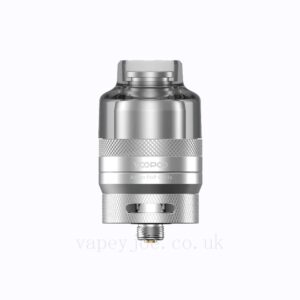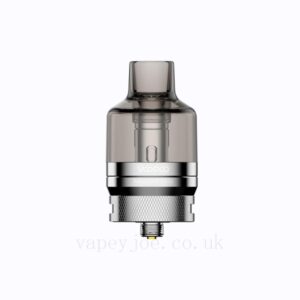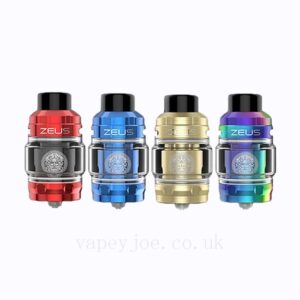Vape Tanks
Maximizing Vaping Experience with Vape Tanks: A Comprehensive Guide
Vape tanks are pivotal components in any vaping device, responsible for holding the e-liquid and housing the coil, enabling you to enjoy your favorite flavors. In this comprehensive guide, we will explore everything you need to know about vape tanks, from how they work to the different types available. Let’s dive in and demystify this essential vaping component.
Understanding Vape Tanks
Vape tanks are the part of the vaping device that holds the e-liquid. They typically consist of a glass or plastic reservoir and a metal base that contains the coil and wicking material. The coil is responsible for heating the e-liquid, turning it into vapor. Vape tanks come in various shapes and sizes, and each type has its unique characteristics and performance.
How Vape Tanks Work
Vape tanks work by housing the e-liquid and coil. The coil heats up when activated, vaporizing the e-liquid inside the tank. The vapor is then inhaled by the user. The coil is replaceable, allowing users to switch flavors or replace worn-out coils easily. The tank also features an airflow control mechanism that allows users to adjust the airflow to their preference, resulting in a customized vaping experience.
Types of Vape Tanks
There are several types of vape tanks available on the market, each with its characteristics and performance:
1. Sub-Ohm Tanks:
Sub-ohm tanks are designed for high-powered vaping devices. They use low-resistance coils that are less than one ohm. Sub-ohm tanks produce large clouds of vapor and intense flavor. They are ideal for direct-to-lung (DTL) vaping and are preferred by cloud chasers.
2. RTA (Rebuildable Tank Atomizers):
RTA tanks allow users to build and install their coils. They offer more customization options, allowing users to tailor their vaping experience to their preferences. RTA tanks are ideal for experienced vapers who enjoy building and experimenting with coils.
3. RDA (Rebuildable Dripping Atomizers):
RDA tanks do not have a reservoir to hold e-liquid. Instead, users drip e-liquid directly onto the coil and wick. RDAs offer the best flavor and vapor production, making them a favorite among flavor enthusiasts and cloud chasers.
4. Clearomizer Tanks:
Clearomizer tanks are the most common type of vape tank. They are easy to use and maintain, making them ideal for beginners. Clearomizer tanks typically have a replaceable coil system, allowing users to switch coils easily. They offer a balance of flavor and vapor production, making them suitable for both beginners and experienced vapers.
How to Choose the Right Vape Tank
Choosing the right vape tank is essential for a satisfying vaping experience. Here are some factors to consider when selecting a vape tank:
1. Tank Capacity:
Consider the tank capacity when choosing a vape tank. Larger tanks hold more e-liquid, allowing for longer vaping sessions without the need for frequent refills. However, larger tanks may be bulkier and less suitable for smaller vaping devices.
2. Coil Compatibility:
Ensure that the tank you choose is compatible with the type of coil you prefer. Different tanks support different types of coils, so it’s essential to check the specifications before purchasing a tank.
3. Airflow:
The airflow of the tank affects the draw resistance and the amount of vapor produced. Tanks with adjustable airflow allow users to customize their vaping experience according to their preferences.
4. Build Quality:
Look for a vape tank with good build quality and durable materials. Stainless steel and pyrex glass are common materials used in high-quality vape tanks.
How to Maintain Your Vape Tank
Proper maintenance is essential to ensure the longevity and performance of your vape tank. Here are some tips for maintaining your vape tank:
1. Cleaning:
Regularly clean your vape tank to remove any e-liquid residue and dirt. Disassemble the tank and wash it with warm, soapy water. Rinse it thoroughly and allow it to dry completely before reassembling.
2. Coil Replacement:
Replace the coil regularly to maintain the flavor and vapor production of your vape tank. Over time, the coil will become clogged with e-liquid residue and lose its effectiveness.
3. Avoid Dry Hits:
Ensure that the coil is adequately saturated with e-liquid to avoid dry hits. When the e-liquid level is low, refill the tank to prevent the coil from burning.
4. Storage:
When not in use, store your vape tank in a cool, dry place away from direct sunlight. This will prevent the e-liquid from degrading and ensure the longevity of your tank.
Conclusion
Vape tanks are a crucial component of any vaping setup, holding the e-liquid and housing the coil. By understanding the different types of tanks available and how to choose the right one for your vaping style, you can ensure a satisfying vaping experience. Proper maintenance is also essential to ensure the longevity and performance of your vape tank. By following the tips and guidelines outlined in this guide, you can enjoy a smooth and flavorful vaping experience with your chosen vape tank.
Showing all 3 results



